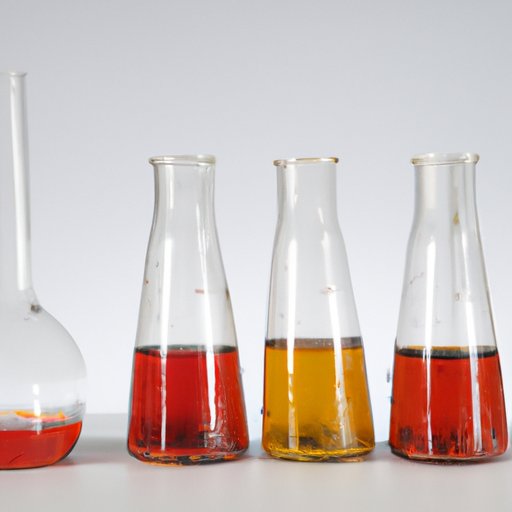Which Substance is a Mixture? Understanding the Different Types of Mixtures and Their Importance in Daily Life and Industry
When we think of substances, we often think of them as being pure and not mixed with anything else. However, in reality, many of the substances we encounter in everyday life are actually mixtures of different components. Understanding what a mixture is and how it differs from a pure substance is important in our daily lives as well as in many industries and manufacturing processes.
The Difference Between Mixtures and Pure Substances
A mixture is a combination of two or more substances that are not chemically bonded together. This means that the individual components in a mixture still maintain their own properties and can be separated from one another. On the other hand, a pure substance is made up of only one type of particle, either an element or a compound.
Mixtures are much more common in daily life than pure substances. For example, the air we breathe is a mixture of different gases, water from the tap is a mixture of water and various minerals, and the soil in our yards is a mixture of dirt, rocks, and organic matter.
Mixtures can be further broken into two categories: heterogeneous and homogeneous. Heterogeneous mixtures are composed of visibly different parts. For example, a salad with lettuce, tomatoes, and avocado is a heterogeneous mixture because you can see the different components. Homogeneous mixtures, on the other hand, are composed of uniform parts and are often difficult to distinguish visually. For example, sugar dissolved in water is a homogeneous mixture because it appears as a uniform solution.
Types of Mixtures
There are three main types of mixtures: solutions, suspensions, and colloids. Solutions are homogeneous mixtures in which one substance is dissolved in another. For example, sugar dissolved in water is a solution. Suspensions are mixtures in which small particles are suspended in a liquid or gas. For example, muddy water is a suspension because the dirt particles are suspended in the water. Colloids are mixtures in which small, undissolved particles are dispersed throughout a liquid or gas. For example, milk is a colloid because the fat particles are dispersed throughout the liquid.
Common Household Mixtures
Many of the substances we encounter in our homes are mixtures. Air is a mixture of gases including nitrogen, oxygen, and carbon dioxide. Water is also a mixture of H2O molecules and various minerals. Soil is a mixture of organic matter, minerals, and decomposed material.
Understanding the composition of these mixtures is important in daily life, as their properties affect how we use them. For example, the minerals in our water can affect the taste and texture of food we cook with that water, and the composition of our soil can affect the growth of our plants.
Methods of Separating Mixtures
Because mixtures can be made up of different components, it is sometimes necessary to separate them. There are several methods for separating mixtures, including filtration, distillation, and chromatography.
Filtration is the process of separating a solid from a liquid or gas by passing it through a filter. Distillation is the process of separating a liquid from a mixture by heating it and then cooling and collecting the vapor that is produced. Chromatography is a laboratory technique for separating components of a mixture based on their chemical properties.
Each method has its pros and cons depending on the specific mixture being separated. For example, filtration is effective for removing large solids from a liquid, but may not be effective for removing very small particles. Distillation is effective for separating liquids with different boiling points, but may not be effective for separating liquids with very similar boiling points.
Scientific Look at Mixtures
Mixtures are governed by physical and chemical properties that determine their behavior. For example, the solubility of a substance in a particular solvent will affect whether it dissolves or remains a separate component in the mixture. Phase changes, such as melting and boiling, can affect the separation of a mixture.
Additionally, intermolecular forces between the different components of a mixture can affect their behavior. For example, if the forces between the components are weak, the mixture may separate easily. If the forces are strong, the components may remain mixed even under different conditions.
Mixtures in Industry and Manufacturing
Understanding mixtures is important in many different industries and manufacturing processes. In food science, for example, the composition and properties of mixtures are key in creating new products and improving existing ones. In pharmaceuticals, mixtures are used in formulations of medications and understanding their properties is important in drug development.
In the energy industry, mixtures are used in a variety of ways. Gasoline, for example, is a mixture of different hydrocarbons. Mixtures are also used in energy production through various fuel systems and processes. Understanding the properties of these mixtures is vital for creating efficient and environmentally friendly energy sources.
Conclusion
Understanding what a mixture is and how it differs from a pure substance is key in our daily lives, from the air we breathe to the foods we eat. Different types of mixtures require different methods of separation, and understanding the physical and chemical properties that govern mixture behavior is important in scientific research and many different industries. By understanding mixtures, we can create new products and improve existing ones, make better use of resources, and create a more sustainable future.
